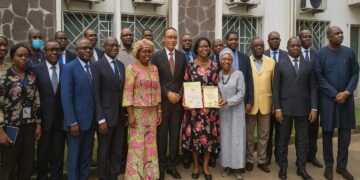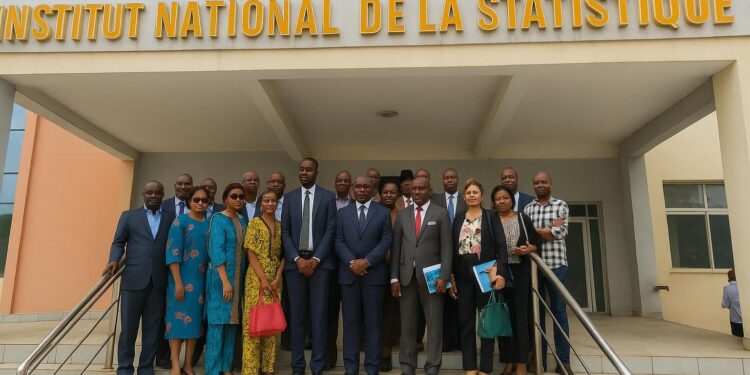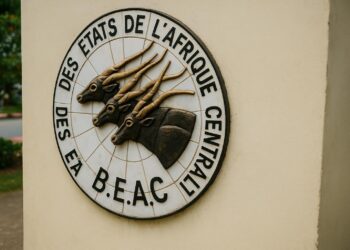Why INS Is Updating Industrial Benchmarks
Executives from Congolese manufacturing plants gathered in Brazzaville after the National Institute of Statistics extended an unprecedented invitation to debate the future of two headline macro-indicators—the Industrial Production Index and the Industrial Producer Price Index—cornerstones for investors trying to decode short-term economic momentum.
Director General Stève Bertrand Mboko Ibara opened the exchange by stressing that reliable, timely numbers are now as strategic as raw materials, arguing that “credible statistics are the oxygen of modern management” (INS, 2025), a message welcomed by participants representing metallurgy, agro-processing and building materials.
Until now, national stakeholders relied on 2010 base-year series that no longer capture shifts such as liquefied-natural-gas output, digital fabrication or new cement capacities financed under public-private partnerships. The revision therefore seeks to align Congolese practice with SNA 2008 and AfDB guidance on industrial surveillance.
Inside the Technical Overhaul
The team led by Fatoumata Diallo, head of Short-Term Analysis, confirmed that the sample of establishments will double to roughly 400 entities, stratified by turnover, employment and geographic cluster to reflect Pointe-Noire’s petro-corridor as well as emerging light-manufacturing hubs in Ouesso and Oyo.
Weighting schemes will be recalculated from the latest Supply and Use Tables, moving away from legacy coefficients inherited from Central African regional averages. According to Diallo, this pivot should push up the weight of timber derivatives and downstream gas products, sectors generating export receipts yet previously under-represented.
Methodologically, Laspeyres formulas will be replaced by Fisher indexes, reducing substitution bias after price shocks in energy inputs. Monthly data capture will use secure cloud portals approved by the National Cyber-Security Agency, shortening the publication lag to 30 days and satisfying IMF Special Data Dissemination Standard requirements.
A pilot phase staged between January and June 2026 will benchmark results against customs clearances and VAT returns. Figure 1, presented during the workshop, contrasted legacy and proposed series, illustrating how new deflators dampen volatility observed after the 2020 oil-price correction while still tracking genuine capacity utilisation shifts.
What Industries Stand to Gain
For manufacturers, the overhaul promises granular intelligence on input-cost dynamics, helping procurement teams hedge energy or freight exposures. “An updated IPPI means we negotiate supply contracts on evidence, not intuition,” argued Alfred Ngoma, CFO of a Pointe-Noire steel mill that exports billets to Cameroon and Gabon.
SMEs in agro-industry anticipate better access to working-capital lines because banks will model seasonality more precisely. Ecobank’s sector analyst, Lucie Makondo, noted that lenders often add a risk premium when macro data seem opaque; cleaner indices could release an estimated 20 billion CFA francs in additional credit.
Downstream users, from insurers pricing property cover to logistics operators negotiating port tariffs, will equally benefit. The Port Authority of Pointe-Noire signalled that it may tie its next fee revision to the re-based IPPI, introducing a transparent trigger rather than discretionary adjustments that sometimes surprise freight forwarders.
Implications for Budget and Policy
On the public-finance front, the Ministry of Economy sees the new indices as a tool to refine quarterly revenue forecasts, especially royalties linked to mining and timber output. A ministry adviser said improved now-casting could cut the variance between projected and actual cash flows by five percentage points.
Development partners have also taken notice. The African Development Bank signalled that disbursement triggers under the forthcoming Policy-Based Loan will reference the upgraded IPI, linking budget support to concrete evidence of diversification rather than headline GDP growth, an approach broadly consistent with the institution’s country strategy paper.
Regional integration bodies, notably CEMAC, could use Congo’s experience as a template. A working group under the Statistics Harmonisation Agenda is expected to review Brazzaville’s methodology in May 2027, potentially adopting common classification codes that would ease comparative analysis across Central African customs union members.
Next Steps and Timetable
The INS will circulate draft questionnaires by September 2025, incorporating digital signatures to streamline compliance. Training webinars for finance directors will follow, supported by UNIDO and the Agency for the Promotion of Investments, ensuring that even mid-sized enterprises in inland prefectures can transmit data without specialist software.
Public dissemination of the re-based indices is scheduled for January 2027. Figure 2 in the INS roadmap details quarterly milestones, including an external audit by the Francophonie Statistical Hub. This timeline, authorities say, balances methodological rigour with investor demands for faster, actionable insights.
Stakeholders left the Brazzaville forum with a shared agenda: deliver data that mirrors the country’s industrial reality and, by extension, underpins policy credibility. If executed as planned, the initiative could become a benchmark for evidence-based governance within Central Africa’s evolving economic architecture.
Sustainability and Congo Basin Commitments
Sustainability agencies view the revision as complementary to Congo’s Nationally Determined Contribution because cleaner production data will feed carbon-accounting models. The Climate Council expects that, once disaggregated by energy source, the IPI could showcase efficiency gains from gas-to-power initiatives, supporting the government’s pledge to curb industrial emissions.












































